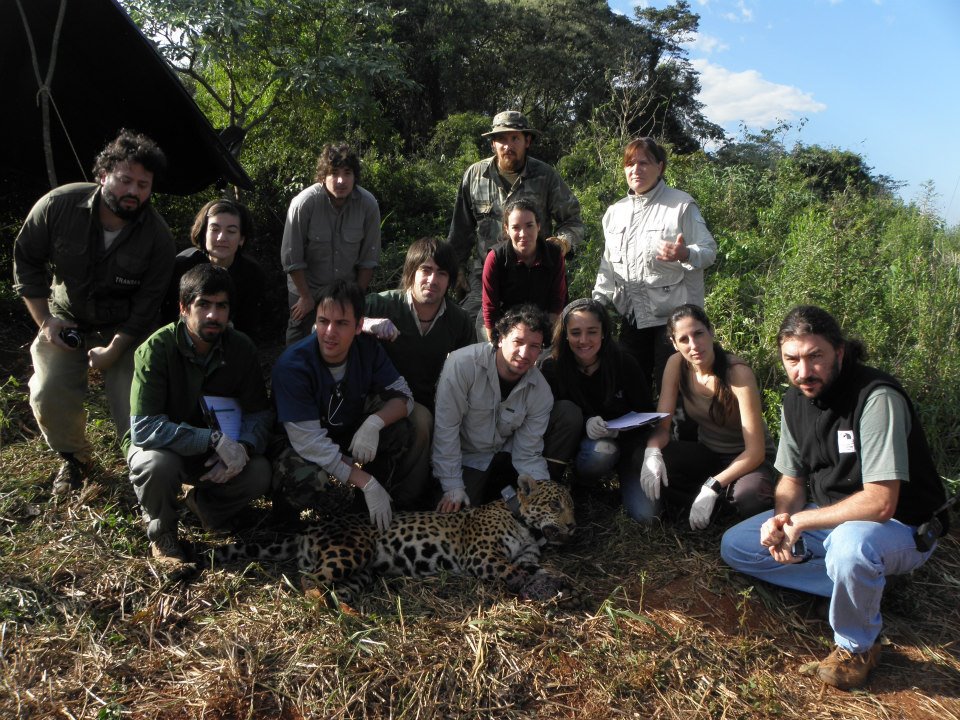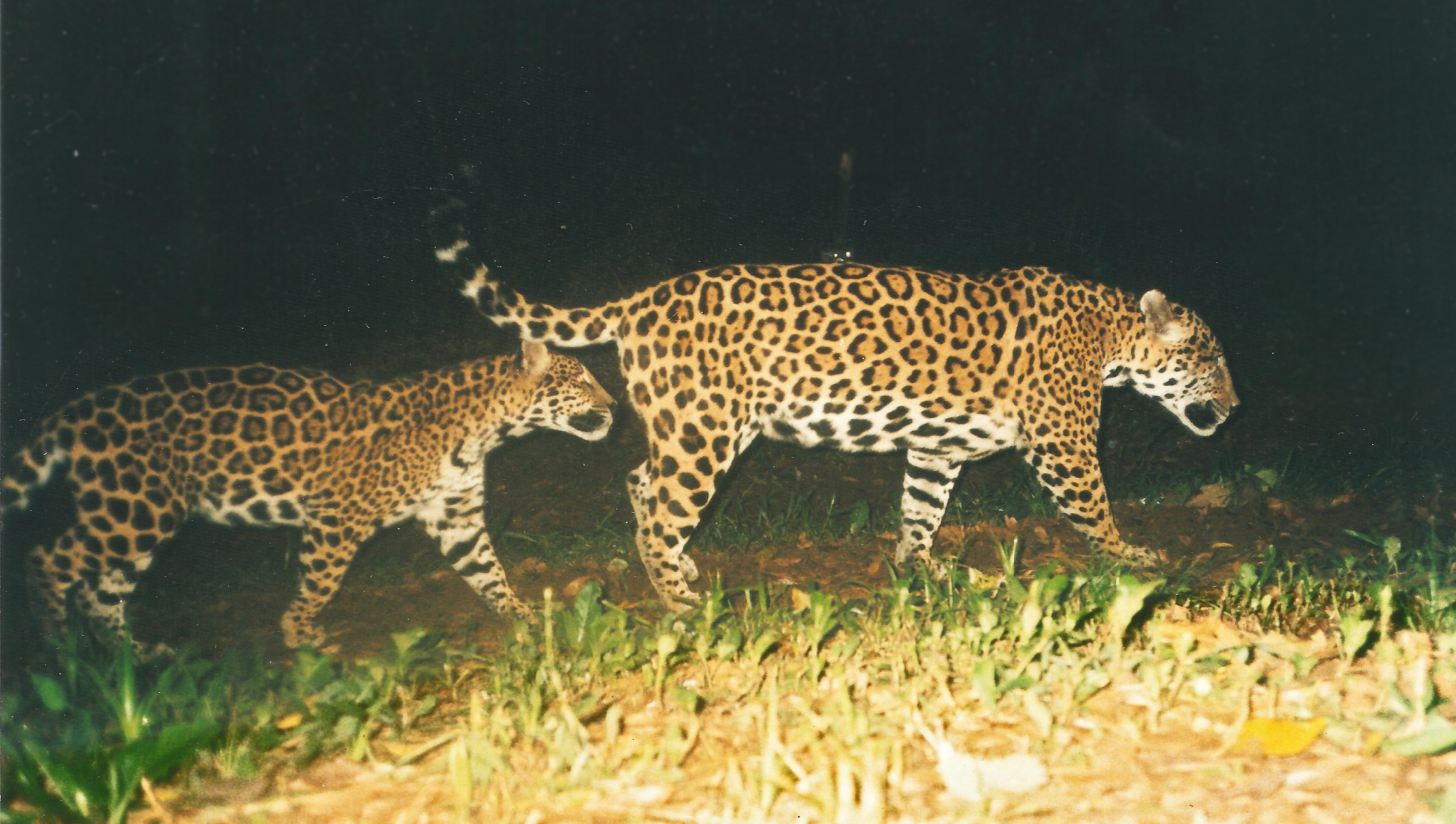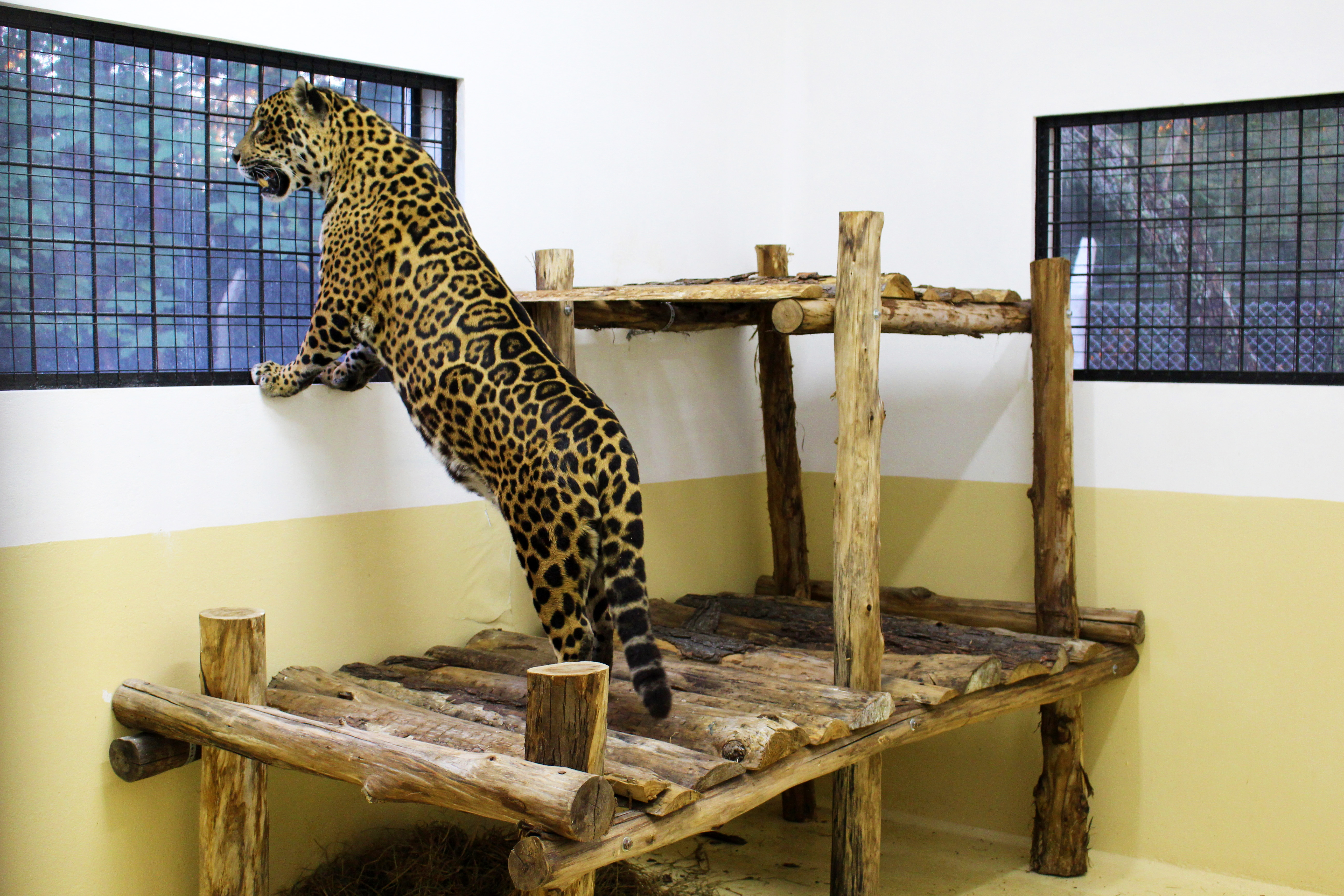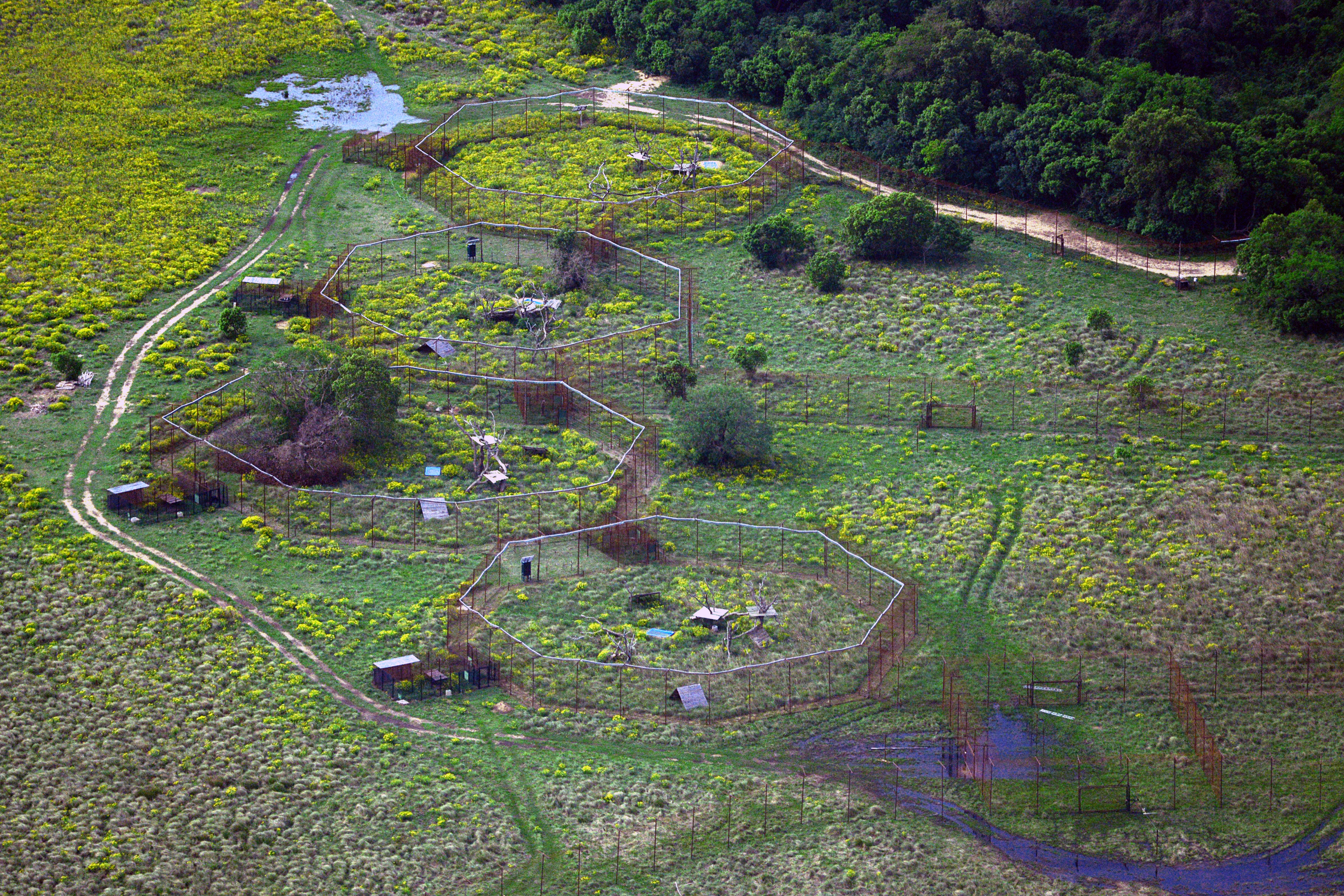When you walk around the Littoral region, northeast Argentina, you seldom hear the word “jaguar.” Here and across Argentina the Guaraní expression “yaguareté,” meaning “the real beast,” is more common. The presence of the yaguareté in many famous stories, songs, and legends highlights its importance in Argentine culture and history. The biggest feline on the continent, it used to have a large distribution from the south of the USA to the north of Patagonia in South America but, for a number of reasons, yaguareté numbers are diminishing dramatically: illegal hunting, changes in the use of the territories, deforestation, and conflicts with farmers. Today, the yaguareté can be found in less than 50 percent of its former territory on the American continent.
In Argentina, the status of the yaguareté is particularly alarming: there are approximately only 200 yaguaretés across three separate areas in the north of the country—the mountain jungles in Salta, the semiarid Gran Chaco, and the rainforest in Misiones. The latter two are situated in the Littoral region. Yaguaretés now live in five percent of the territory they once occupied; previously, they could also be found in the central region and in the north of Patagonia.
As endangerment became more serious, lawmakers focused on implementing protective measures. Today, there are national and provincial regulations classifying the yaguareté as a “natural monument.” This is a legal conservation category in Argentine regulations for natural parks and reserves. The idea is to declare any space, thing, or plant or animal species with aesthetic, historical, or scientific value as a natural monument, which implies absolute protection. In 2001 the yaguareté was declared a natural monument under national law 25.463; the Provinces of Chaco, Misiones, Santiago del Estero, and Salta enforced similar measures in their provincial legislation.

An anthropocentric perspective underlines this juridical concept focusing on scientific, historical, or aesthetic value. Current debates have led to the reevaluation of legislative and political proposals from a biocentric or ecocentric perspective. These discussions have also started to permeate larger discussions in Argentina and other proposals, particularly the recent national law project presented in July 2015 concerning the rights of nature. In Latin America, the rights of nature are legally recognized in Bolivia and Ecuador.
Despite being declared a natural monument, the yaguareté’s situation remains serious. As a result, different social actors, including scientific and nongovernmental organizations and environmental activists, are working together in the Littoral region to save the species by collaborating on public policies and regulations. Of the various activities related to this objective, we present two projects currently underway in the Argentine northeast.
The first is the “Yaguareté Project” based in Misiones. The objective is to conserve a viable population of this species in the semiarid Gran Chaco and the rainforest in Misiones. The project comprises scientists who work for the national council of research (Conicet) and members of a nongovernmental organization that focuses on the research of the Atlantic forest (Ceiba), as well as national park rangers and professionals in the field of natural sciences.
One of the main goals has been to establish the number of yaguaretés in the region, using special camera traps among other identification strategies. This is essential for recreating a diagnosis of the population state. The animals are unique owing to the spots on their coats, and so can be monitored individually. Each yaguareté is also given its own name: below are “Salada” and “Yasi Yepata.”

Project members work in and study the conditions of the yaguareté’s habitat to help them identify similar places and to establish the possibility of building connecting corridors. This is very important given the current fragmentation of the yaguareté’s habitat. They also study the uses of the territory to improve their understanding of the species and to strengthen their efforts to preserve the habitat. In parallel, the project promotes education and the dissemination of information in the region and beyond through exhibitions, conferences, and workshops, and contributes to public policies and legislative proposals.
The second yaguareté conservation project, the “Ibera Project,” is based in the Province of Corrientes, near Misiones. Its primary goal is to reintroduce the yaguareté to the “Esteros del Iberá,” one of the most biologically diverse places in the country and the second largest wetland in the world. The project focuses on the restoration of species and is supported by the Conservation Land Trust, which is made up of an interdisciplinary team of professionals from Argentina and abroad. In the last few years, they have worked on similar projects for mammals like the giant anteater, the pampas deer, and the collared peccary. The “Ibera Project” is the first of its kind in Latin America to reintroduce the symbolic yaguareté, and “Tobuna”, a female, will be the first to return. The second one, a male called “Nahuel,” arrived in Corrientes in January 2016. Both are the first hopes for this project.

As the yaguareté population in the country is very small, the project will start with animals that currently live in captivity. “Tobuna” previously lived in the zoo of Batán in Buenos Aires Province and was the first yaguareté to be reintroduced. Since May 2015, she has been living in semi-natural conditions in the Jaguar Experimental Breeding Center in San Alonso reserve in the “Esteros del Iberá,” which was approved in 2014 by the provincial and national authorities. The center is not easily accessible and can only be reached by air or water.“Nahuel” was born in a Uruguayan zoo, and then lived in Bubalcó Zoo in Allen, Río Negro Province, before coming to the Littoral region.

The challenge now is to work on the training of these animals for their own babies’ training: that is, to help release the next generation into the wild.
At a time when the threat of extinction is growing, we should be reevaluating how we can contribute to preservation strategies in all disciplines. Preservation of life should not only be based on our own perspectives and interests. As someone told me years ago in the “Esteros del Iberá,” maybe the reason to save the yaguareté is simple: “They have a right to exist.”
Leave a Reply